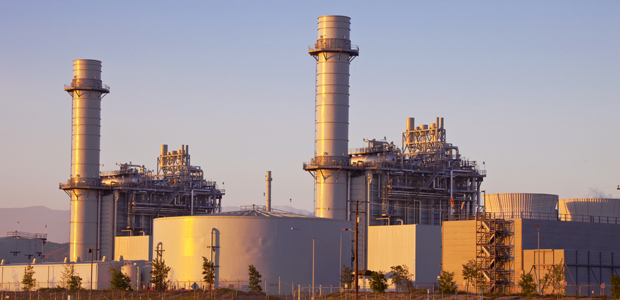
Coal To Gas Switching
Variety Of Factors Impact Gas-Fired Power Generation Market
By Gregory DL Morris, Special Correspondent
Electricity generation and liquefied natural gas exports are two important long-term demand drivers in the U.S. natural gas market. The first outbound LNG cargoes are expected to depart U.S. shores later this year, and there has been much speculation about a huge spike in planned retirements of aging coal-fired power generating capacity this year and their subsequent replacement with natural gas-fired capacity.
By some estimates, gas producers may anticipate at least 1 billion cubic feet a day of new demand from the electric power sector.
Analysts confirm that the retirements are going ahead, driven as much by the high costs of meeting environmental regulations for older coal units as by the tempting economics and proven environmental benefits associated with converting to natural gas. However, the equation is anything but a simple fuel replacement in the belly of a boiler. Most observers say they expect the bump in gas demand to be meaningful, but less than anticipated for many reasons. Still, the long-term outlook is positive, given that the new gas-fired units being built are expected to remain in service for three to four decades.
“We still are trying to address the finer points of the planned retirements,” allows Rick Margolin, senior natural gas analyst with Genscape Inc. “The aggregate estimates are for 22-24 gigawatts of coal-fired generation to begin going out of service this summer. But the estimates for that top-line figure vary; the Energy Information Administration’s count is 15 gigawatts, but most others are in the low 20s.”
Even if there was consensus around the coal-fired generation being taken off line, there are a multitude of variables between that number and a meaningful gas demand estimate that producers can take to the bank. “Even if we knew for certain how much coal-fired power was coming off, it would still be an open question as to how much of that was going to be replaced by demand for gas,” says Margolin.
At the top end is 1.1 Bcf/d of new demand, Margolin calculates, quickly adding a host of asterisks. “That is probably an unrealistic number,” he qualifies. “That would be a straight calculation if 24 gigawatts of name- plate coal-fired generating capacity was replaced one-for-one with gas-fired generation. That would be a big assumption.”
Lower Operating Rates
The first cut is the deepest, and Margolin explains there is a yawning delta between name plate capacity and actual operating rates for many of the power stations in question. Not surprisingly, he explains, the units slated to be removed from the fleet are largely the oldest and least economical, so it makes sense that they wouldn’t have front-line operating rates.
The average operating rate for the plants due to be shuttered is only 26 percent, Margolin testifies, recognizing that number surprises many people. “It is one of the key under-reported themes in this issue,” he says. “Many of these plants have been little used or even idle.”
In the northeastern United States, many coal-fired plants are operated seasonally, confirms Stefan Baden, an analyst with Genscape’s New York/New England power market intelligence team. “These plants are needed in winter when the natural gas supply is constrained, but not in other seasons,” he points out.
The complication of constraints is manifest in other ways as well, Margolin observes. “No plant operator can just plop a new gas-fired unit down next to the coal unit it is replacing,” he says, explaining there has to be pipeline infrastructure to bring the molecules in, and transmission lines to take the electrons out.
“As Stefan noted, the Northeast is pipeline-constrained in the winter,” Margolin says. “Out west, California is constrained in the summer. Of course, new pipe can and is being built, but electricity generation is just one segment of the market for the midstream (gas) sector. There is rising industrial demand with the manufacturing renaissance in this country, as well as storage commitments. There are other pulls on pipelines, just as there are on gas supplies.”
Alternatives Cloud Picture
Lauren Seliga, director of real-time power for Genscape, details two further complications in calculating new gas demand from coal-based power retirements: There are alternative fuels for power generation, and there are alternatives to generating power at all, or at least to building new generating capacity.
“In the areas where it is still the dominant fuel, such as the Illinois-Indiana corridor, coal is still setting the price of fuel at the margin,” says Seliga. “Even in situations where natural gas has the advantage, there is the matter of both pipelines and transmission. Those also tend to be areas where alternative fuels are more of a presence in the mix.”
She continues, “There is a robust market in renewables already in Minnesota and Iowa. So while coal-fired power is being retired, it is not a given that natural gas will replace all that retired capacity.”
Even more to the point, she comments, demand patterns have been changing. Some coal units have gotten too old or would be too expensive to bring into compliance with modern environmental standards. But others are idle because the demand base has diminished or shifted. In many cases, Seliga says, the replacement for retiring coal units is not new generation at all, but transmission.
Like peeling an onion, the layers of the response to coal-unit retirements go all the way down. Even if local demand has remained or grown, other generating capacity around the region may have increased, and the local utility has the option to buy incremental power from another source, obviating the need for any replacement at all, she outlines.
The primary question is market-based, Seliga says, but the cost and availability of fuel is not the only calculation. “Remember, this is a power replacement question, not only a fuel replacement question,” she emphasizes. “The answer can be simply to plug in elsewhere.”
That is not necessarily discouraging news for gas producers, but it depends on what the other regional power sources are. In more than a few cases, Seliga says, that still could be natural gas. That may be cold comfort, however, if that gas demand is already in the market.
“No one wants to be stuck holding the bag, either on gas production, transmission, or consumption.” Seliga says. “Soon, everyone will know more about exactly which generating stations will be retired this year, and how the power companies plan to adjust to that.”
In sorting those determinations, Genscape will be calling on its historical operating data for power stations. “It is very helpful to know what happened the last time gas was at a given price, and coal and electricity were at given prices,” says Seliga. “You notice quickly that the historical data are all variable, but most of the projections are linear.”
Balancing Acts
Teri Viswanath, senior natural gas strategist for BNP Paribas, notes with some irony that the power sector is in the midst of a complicated and delicate balancing act as it retires coal-fired units and tries to make sense of where and how to replace that generating capacity. “The power sector always has been the balancing act in the North American natural gas market, with industrial and residential demand remaining fairly stable,” she suggests.
She also sounds a cautionary note about the long-term future of gas prices. “Power companies are making some very large capital decisions, and blueprints are drying, based on a gas price environment that may not exist for the lifetime of these projects,” says Viswanath.
To understand the relationship between the power sector and its fuel segments, Viswanath says a little history is helpful. “In the 1970s, there was a ban on new gas-fired power plants in response to what was perceived to be a gas shortage,” she begins.
As a result, a lot of coal-fired power was built. Coal was the cheap and plentiful domestic fuel.
“In the 1980s, President Reagan ended the prohibition on using gas to generate electricity, so that portion of the fleet was rebuilt,” Viswanath continues.
She adds that there would have been a renewal of the nuclear fleet in the ’90s, but for three unexpected developments:
- Combined-cycle technology;
- The rise of alternative energy; and
- The opening of the merchant power market.
Thus, one gets to the current gas business. “Natural gas is not just the bridge to the future, like it once was promoted, but it is the current reality,” says Viswanath. “Nuclear plants are aging and are becoming increasingly expensive to operate in compliance with regulations. The same applies to older coal plants. The only off-ramp is renewables, and those only start to be competitive when gas prices reach $6-$7 an MMBtu.”
It bears mentioning, she allows, that at that price level, virtually all U.S. shale gas plays are economical to develop, as well as more conventional supply basins. “At $7 gas, renewables make more economic sense,” Viswanath reasons.
At the other end of the scale, when gas is below $3 an MMBtu, “only one-third of the U.S. coal-fired generating fleet is economical to operate,” she adds.
BNP calculations show 15.3 gigawatts of coal-fired power being retired this year and next. “We are seeing the needle move a bit on gas demand already,” attests Viswanath. “In January, it was only 300 million cubic feet a day in incremental demand, but by December it could be as much as 1.74 Bcf/d. That is based on combined-cycle efficiencies.”
Actual replacement building is a little behind the retirement curve, “so those numbers are theoretical,” she hedges. “Power companies are assessing the balance one plant at a time as they move through retirements.”
The conclusion for gas producers, Viswanath suggests, is that the present removal of coal-fired units is not an instant bonanza of new-found demand, but she says the longer-term outlook is very favorable. “About 65 percent of the new generating capacity being built is gas-fired, and that is what we are going to use for the next 30 or 40 years. What the industry builds now is what it will have to use.”
The Coal Factor
One additional factor in the size of the gas-fired power market is that the coal industry is hardly a passive observer. “Coal and gas chase each other at the margins,” says Andy Steinhubl, lead for energy and natural resources at KPMG Strategy.
He says the coal market is long on supply as a result of declines in both domestic and international demand. “China has been a major importer of U.S. coal,” he mentions. “That has decreased because of many factors in China and in global coal markets, but the fact remains that a coal overhand looms over the whole gas-replacement scenario.”
Mine operators are becoming more competitive, closing inefficient operations and focusing on world-scale facilities, Steinhubl relates. It is also important to remember that coal can move around the country on unit trains and barges almost as efficiently as gas flows by pipeline, he reminds.
“There are bottlenecks in both systems,” says Steinhubl. “There are areas of plentiful supplies and areas of constraint. It is important to remember that coal has fewer (market) options than does gas. You can expect coal to fight hard at the margins.”
He also cautions that the path for gas replacement is not entirely smooth. “I worry a bit about how fast that gas-fired power will need to come into service. There are five impediments I can see,” Steinhubl counts. “First, the U.S. economy is still flat or growing slowly. That is a direct factor in power demand. The second is a strong and wide emphasis on efficiency among all consuming segments. That will moderate demand as well.”
The third factor is one that gets more attention in the process industries than in power: the size of the installed base. “There is plenty of spare capacity in the (generating) industry,” says Steinhubl. “As with any large base, incremental improvements across the industry can yield significant increases in production, if that is called for.”
He says the final two factors are easy to see, but difficult to assess. “As I said, coal will fight hard where it can. There is plenty of supply and prices are low,” Steinhubl says. “And in places where coal cannot compete, renewables may be able to challenge gas.”
Overall, Steinhubl says he is optimistic about the outlook for gas demand. “There is not likely to be any big gas demand boom from coal-fired power retirements, but again, gas has many other markets that coal does not,” he reasons. “There is increasing industrial demand; there is growing chemical production, gas-to-liquids, and even exports. Gas even has a role in renewables as a backup for wind and solar.”
For other great articles about exploration, drilling, completions and production, subscribe to The American Oil & Gas Reporter and bookmark www.aogr.com.


















